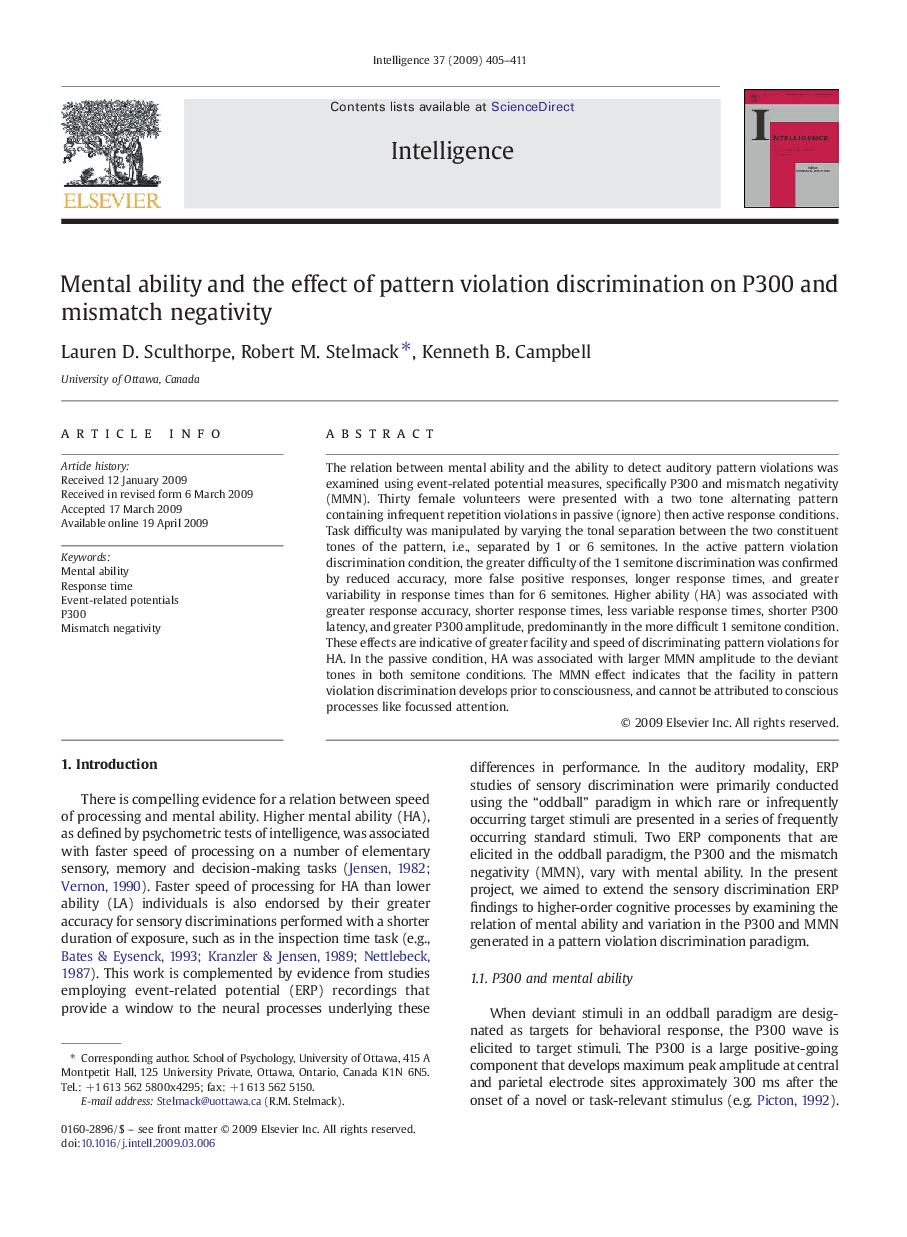| Article ID | Journal | Published Year | Pages | File Type |
|---|---|---|---|---|
| 929194 | Intelligence | 2009 | 7 Pages |
The relation between mental ability and the ability to detect auditory pattern violations was examined using event-related potential measures, specifically P300 and mismatch negativity (MMN). Thirty female volunteers were presented with a two tone alternating pattern containing infrequent repetition violations in passive (ignore) then active response conditions. Task difficulty was manipulated by varying the tonal separation between the two constituent tones of the pattern, i.e., separated by 1 or 6 semitones. In the active pattern violation discrimination condition, the greater difficulty of the 1 semitone discrimination was confirmed by reduced accuracy, more false positive responses, longer response times, and greater variability in response times than for 6 semitones. Higher ability (HA) was associated with greater response accuracy, shorter response times, less variable response times, shorter P300 latency, and greater P300 amplitude, predominantly in the more difficult 1 semitone condition. These effects are indicative of greater facility and speed of discriminating pattern violations for HA. In the passive condition, HA was associated with larger MMN amplitude to the deviant tones in both semitone conditions. The MMN effect indicates that the facility in pattern violation discrimination develops prior to consciousness, and cannot be attributed to conscious processes like focussed attention.
